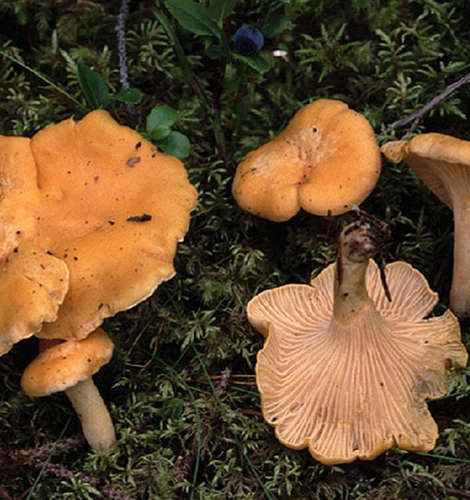Wild mushroom picking may be lucrative, especially in France and in Italy, but it is a pleasure for most people. The activity of mushrooming, already described in the Middle East in the Bible (Leviticus 19: 9-10), is a remnant of a Middle Age tradition, which gave people the right to pick the leftovers of the harvest, thus helping the poor to find food for free.
This has been legalised in two articles of the French Code Civil (articles 520) and Code Penal (article R26 until 1994), and the law gives the right to collect fruits and vegetables left in the field (considered as Res Communis)between sunrise and sunset. This custom is certainly responsible for the absence of fences around most forests in France.
As many others, each year, I transform myself in a coureur de bois. Nearby Grenoble, the forest in autumn is pretty and it is great to claim the surrounding slopes in the Chartreuse, Belledonne or the Vercors Massifs, or the chestnut forests of the Cold Lands hills towards Lyon and Valence.
Hiding in the undergrowth green moss are several eatable and delicious species that are collected in a light straw basket to preserve their integrity. Marching down to the valley and grazing cow fields, two sorts of mushrooms can also be collected. Back at home, mushrooms must be cleaned, then either cooked or preserved.
I like to make them dry them in an empty frying pan. Once all the water has evaporated from the pan, mushrooms can be processed the desired way. If one decides to save them for later, they are left to cool off, put into freezing bags and frozen. This way, the mushrooms keep their flavour as if they came directly from being collected.
In the forest, the orangey chanterelle (Cantharellus Cibarius) shines proudly in the furtive sunrays piercing through the golden leaves. The solid body is agreeable to look at and touch, and represents an excellent comestible. Chanterelles may simply be fried in butter with chopped garlic and parsley and served to accompany any roasted or fried meat. Mixed with eggs, they will make a very tasty omelette. One can also drop them in a stew and let their flavour impregnate the meat.
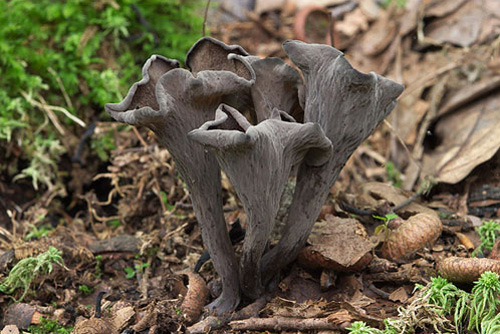
The death trumpet (Cantharllus Cinereus; Craterellus Cornucopoides) bears its name because of its shape and colour, being black when young, getting grey with aging. They are difficult to spot under the blackening leaves covering the ground. The trumpet is appreciated by all consumers whether it is fried and used as a garniture to accompany roasted meats or cooked in an omelette in which people may mistake it for truffle.
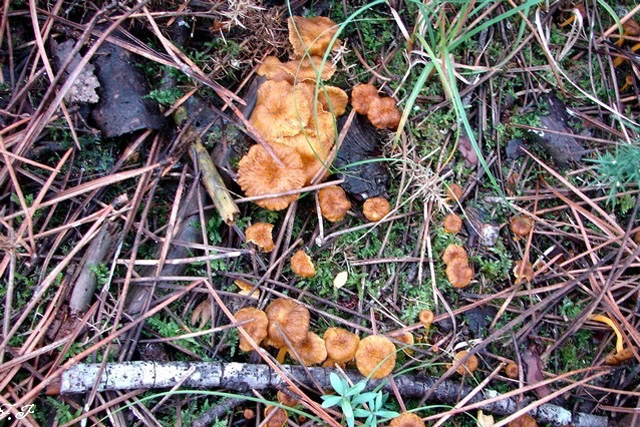
The timid chanterelle-trumpet (Cantharellus infundibuliformis; C. lutescens; C. tubaeformis), hiding in the moss, is often spotted because of its orange stem supporting a brownish curved-in head. It is not as renowned as chanterelles and death trumpets, which is not fair as they have a wild flavour of their own when accommodated similarly.
The mutton foot (Hydnum repandum) glints in the sunrays similarly to chanterelles, its hat and stem being of a yellow orangey colour. They can be little or sometimes very large or even massive. In the latter case, they loose their classical mushroom shape and can take any form. A particularity is that they brake as green wood stick does. It is very important to cut its stem with a knife, as it will grow again from the amputee stem.
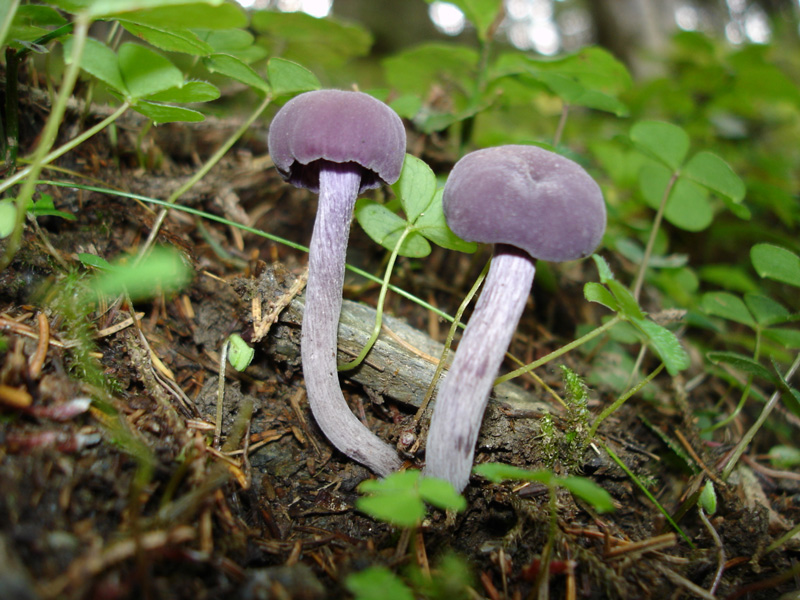
The purple Laccaria amethystea has a slim and elegant small body ad a button cap. One of my friends likes to present it mixed with cream, which then takes a purple colour that rebuts consumers. Some people like to preserve these five mushrooms by letting them dry unwashed on a thread that is needled through their stem and hanged across the room.
This way of preservation requires a lot of space, generally in the basement. When the mushrooms are dry, they are stored in pots sealed with a cap. Before cooking, the dry mushrooms need to be soaked in water and cleaned. I do not prefer this method, as I always find some sand or soil between my teeth.
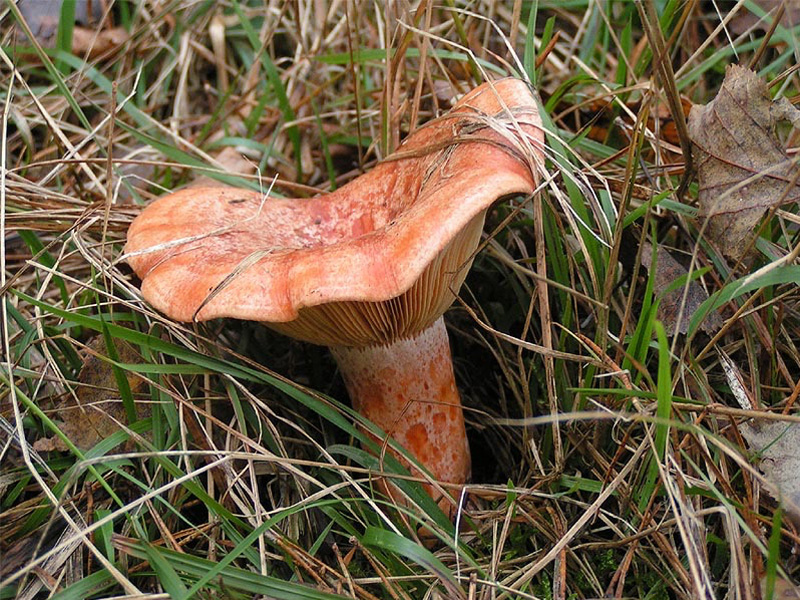
The Romans loved Lactarius delicious which seems to bleed when cut. Lactarius mushrooms are considered a delicacy in the South of France, but are not appreciated in the Alps. Hordes of vans equipped with storing shelves swarm the alpine pine forests to sale their collect in Marseilles. One has to know that Lactarius must be cooked a long time to be appreciated. My way is to add water in the pan heated to evaporate four of five times. Then they will be delicious and accompany advantageously meat stews, especially rabbit stews. Their flesh crackles, which feels different from other mushrooms.
I also like them small and pickled. After a good wash, I cook them in a saucepan with boiling white vinegar for four minutes. The cooking process is stopped immediately by putting them under running water. When they are dry, they are placed in a pot covered by mixed oils including olive oil, one bay leaf, herbs, and garlic and onion finely sliced in small dice. After several months, they will accompany your cold cuts perfectly.
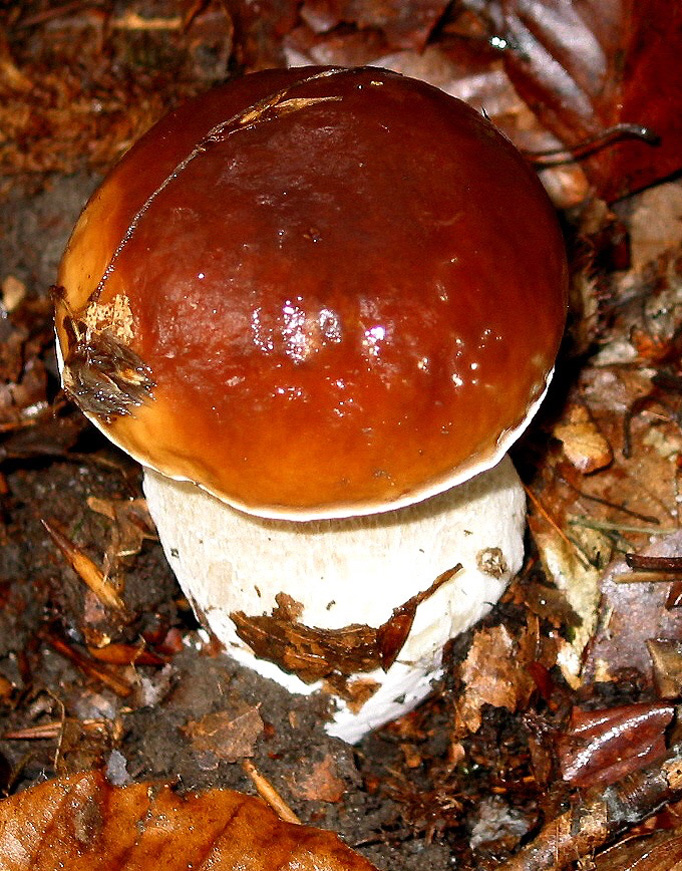
The proud Boletus boletus has a place of its own in the world of eatable mushrooms. It is considered by many to be a delicacy, especially in the South West of France. Everybody keeps in mind the image of its half spherical dark brown cap crowning a yellowish moss made of thousands of tiny tubes and its large bellied white foot. To preserve them, you can slice their flesh thinly and let it dry.
Or you can also do it through freezing as above. The slices can be used in omelettes or accompany stews. But the best would be to eat them fresh using the famous recipe of the “cèpe à la bordelaise”: Separate stems and caps. Cut the stems finely and make a stuffing with chalots bred, salt and pepper, and cook it in a frying pan with a spoon of olive oil. Let the caps render their water in a frying pan and cut 1 cm-wide slices and fry them in 3 table spoons of olive oil. Present the caps covered with the stuffing and parsley.
Of course there are other eatable mushrooms in the autumnal woods. However, I would recommend that only connoisseurs do pick them, as most of them have their toxic brother. But if you stick to the few mushrooms described here, you will certainly enjoy yourself.
Coming down in the valley, you may enter a field in which cows have grazed, which is safer than if there is grazing cattle. There you will find the Agaricus campestris (“rosé des prés” in French) and the Fairy ring mushroom (in French “mousseron”, Entoloma clypeatum).
The Agaricus is the wild parent of the domesticated mushroom you buy in the market. However, it tastes so much better. You can see the glint from their cap from afar. It is called rosé because of the pink colour of the striations below the cap, which is brownish when the mushroom has aged overnight. This characteristic is very important as in the same field there is a false friend, the Agaricus xanthoderma which has exactly the same look but whose striations are white.
Differentiation is especially difficult for young mushroom butts: simply cut the butt in two equal parts through the cap and the stem. Below the cap, you’ll find the safe pinkish colour or the evil white. The mushroom does not preserve well and must be eaten fresh. Cut it into quarters and fry it in a garlic butter not forgetting the parsley. At the time to serve, add two or three spoons of cream, stir, and serve with red meat.
As for Fairy ring mushrooms, they grow in circles; their orange-brown hats supported by a feeble stem being easily seen on the grass. They are delicious fried with the traditional garlic butter.
Mushrooms do not grow only in the autumn. But my knowledge of spring mushrooms, the splendid Morella and the wood Saint George, is only that of a satisfied consumer, not to speak of the very expensive truffle that requires trained dogs or pigs to be found in the ground.
However, with the common mushrooms described here, which certainly exist across the world as mushrooms appeared long before continental drift, I bet you will have a very good tasting time.
